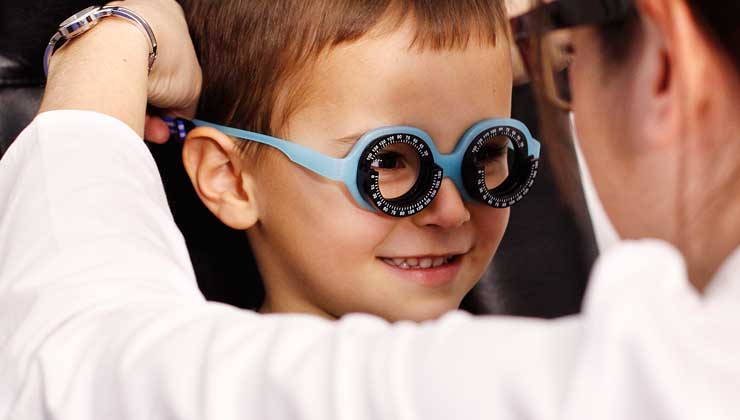¿How to detect a child who doesn’t see well?
14 de September de 2020
Coinciding with Back to School, our ophthalmologists remind you that vision is one of the most influential factors in our children’s performance in schools. ‘Kids perceive 80-90% of their environment’s information through their eyes, so that a non-corrected visual acuity or anomalous ocular movements may provoke an important drawback to their learning’ explains Dr. José Visa, ophthalmologist of the IMO Miranza Group’s Department of Pediatric Ophthalmology. That’s why it’s highly important to be aware of certain visual symptoms.
Signs to know if a child doesn’t see well
The clues that can indicate if your child has visual deficit are depending on their age. ‘In kids younger than a year, one the most important symptoms is the reluctance of using toys or objects, just as of these children are avoiding to look at their parents’ eyes’ explains Dr. Visa. However, there are other symptoms that may be a reason of concern. ‘We need to observe if, for instance, they are getting closer to the TV or other types of screens to see better, if they lose their reading habit or if they suffer headaches during the end of the day.’
A child isn’t a small adult. Every visual problem that isn’t treated before the age of seven may prolong irreversibly during adult life
Dr. Josep Visa, specialist in pediatric opthalmologic
Enhancing Children’s Vision

Pediatric ophthalmologists can detect visual symptoms in the youngest of children, as well as being aware of them.
Moreover, it’s important to undergo ocular Examination every 3-4 years in order to discard any possible alterations.
The beginning of the school course is a good moment to perform ocular checks to kids, whose vision is still in development during their first decade of life. ‘Visual acuity is developed from birth until reaching the age of seven, if a problem isn’t treated on time, it may become chronic and irreversible during adult life.’
¿Which age is recommended for ocular examination?
- It’s important to go under annual exams when the child is between 3-10 years old.
- From 10-16 years, it’s recommended to go to the doctor every two years.
Another recommendation from our specialists regarding present times (COVID-19, online classes, etc.) is to frequent sports and other physical activities in order to boost children’s visual health and health in general.
IMO Institute of Ocular Microsurgery
Josep María Lladó, 3
08035 Barcelona
Phone: (+34) 934 000 700
E-mail: international@imo.es
See map on Google Maps
By car
GPS navigator coordinates:
41º 24’ 38” N – 02º 07’ 29” E
Exit 7 of the Ronda de Dalt (mountain side). The clinic has a car park with more than 200 parking spaces.
By bus
Autobus H2: Rotonda de Bellesguard, parada 1540
Autobus 196: Josep Maria Lladó-Bellesguard, parada 3191
Autobuses H2, 123, 196: Ronda de Dalt – Bellesguard, parada 0071
How to arrive at IMO from:
IMO Madrid
C/ Valle de Pinares Llanos, 3
28035 Madrid
Phone: (+34) 910 783 783
See map in Google Maps
Public transport
Metro Lacoma (líne 7)
Autobuses:
- Lines 49 & 64, stop “Senda del Infante”
- Line N21, stop “Metro Lacoma”
Timetables
Patient care:
Monday to Friday, 8 a.m. to 9 p.m.
IMO Andorra
Av. de les Nacions Unides, 17
AD700 Escaldes-Engordany, Andorra
Phone: (+376) 688 55 44
See map in Google Maps
IMO Manresa
C/ Carrasco i Formiguera, 33 (Baixos)
08242 – Manresa
Tel: (+34) 938 749 160
See map in Google Maps
Public transport
FGC. Line R5 & R50 direction Manresa. Station/Stop: Baixador de Manresa
Timetables
Monday to Friday, 09:00 A.M – 07:00 PM




